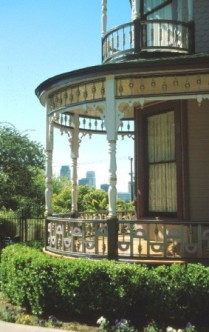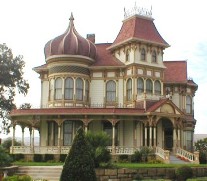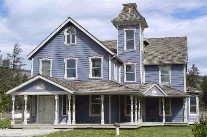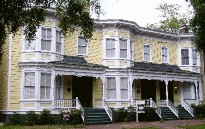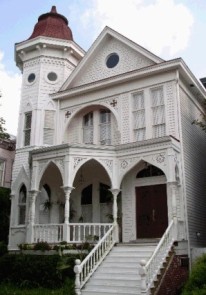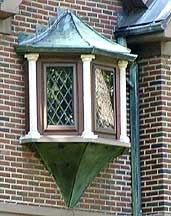|
The Queen Anne style 1880-1910
Queen Anne - The late Victorian period
This is almost certainly a Queen Anne.
For many this style is the quintessential Victorian.
Roots in England - Richard Norman Shaw
The Queen Anne received its introduction to America at the 1876 Centennial Exposition in Philadelphia. Steep roofs and porches were very important in this style. Elaborate, bracketed turned posts and railings were highly visible decoration. Many houses were painted with up to six colors creating a beautiful portrait on the landscape.
Technological developments
The introduction of balloon framing during the latter half of the 19th century was an important development in the building trade. It replaced traditional hewn timber construction.
Some of the best known Queen Anne houses are the "painted ladies" of San Francisco. Classical detailing was also incorporated in the American Queen Anne designs. Reflecting a renewed interest in America’s Colonial past, classical cornices at the eaves, closed pediments at the gables, and wood panels with classical motifs like sunbursts, and acanthus leaves were displayed as exterior decoration.
Features of the Queen Anne:
• Shingled embellishments • A prominent corner tower, usually round but also square.
• Fan shaped light in towers
• Wood shingles in the gable ends and around the belt line of the first and second floors
• A belt of wood shingles wrapping around the tower • Elaborate, monumental chimneys
• Shingled gable walls
• White painted balustrades
• Oriel windows
• Balconies • Bay windows
• Overhanging eaves
• Horizontal bands of leaded windows.
• Cantilevered dormers
• Classical verandas
from Queen Anne style to Victorian style
|





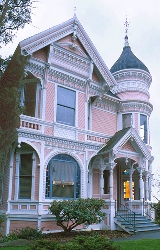
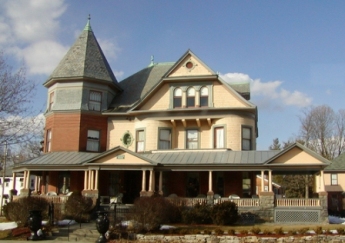
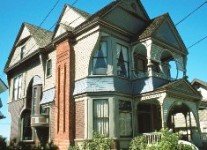
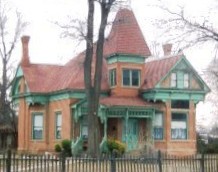
 In America
In America
